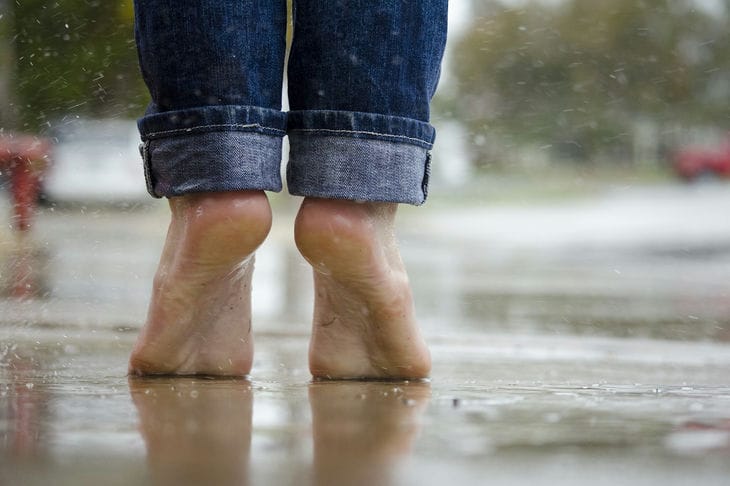According to the National Foot Health Assessment, hard and cracked heels are a problem that affects up to 20% of adults.
This is not only an aesthetic problem, but also a health problem. Failure to address the problem can lead to unpleasant infections.
Hard and cracked heels can be caused by several reasons. Most often, it is improperly chosen shoes, in which the feet sweat and overheat. And the skin without proper care becomes rough and cracks.

The problem is also more common in people who are overweight or in people with diabetes and psoriasis.
"People forget that lifestyle, especially diet and exercise, affects the condition of the feet. That's why, for example, increased stress on the feet due to greater body weight is one of the common causes," notes pedicurist Bis Bis Hana Khubena.
Untreated problems can lead to deeper breaks in the skin of the heel, which greatly increases the risk of infection. Deeper cracks are often painful and may burst and bleed.
“In this case, you need to contact a specialist who will help you in the most severe condition and advise you on how to care for your feet,” advises Hana Hubena.
First aid at home
Treat yourself to a soothing bath with sea salt and your favorite essential oil. This will soften your feet and prepare them to absorb the active ingredients of the foot cream.
Remove rough skin and dead cells, such as with an exfoliant or pumice stone. Then repeat the exfoliation once a week.
Pumice is a porous light rock, which, due to its structure, allows you to rub off rough skin on your feet. But the downside is that the skin on your feet rubs off. Bumps similar to those around nails appear, and in extreme cases, inflammation of the feet. Therefore, subsequent foot care is also necessary.
That is why pedicure specialist Andrea Polachkova recommends using glass nail files, which are softer and more hygienic for heel care. The thicker side of the file polishes rough skin after soaking in warm water, the smooth side evens out the surface of the heels of already dry feet, and can also be used as a nail file for trimming nails.
Electric files, designed specifically to solve the problem of callused skin on the feet, are also excellent in this regard.
Experts do not recommend metal skin trimmers, which use a razor blade to cut away entire sections of hardened skin, for home use.
The method is effective and prevents skin rupture, but in inexperienced hands it can cause painful injuries.
Creams for care and moisturizing
Regular foot care is the best prevention and treatment for rough and cracked skin.
In this regard, always use high-quality cosmetics developed specifically for foot care, containing active substances - urea and lactyl. Urea helps soften rough skin in the foot area and remove dead cells, lactyl restores their natural hydration.
Start regularly lubricating your heels, every evening after bathing. If you already have a crack on your heel, apply a thick layer of Vaseline at night and cover your foot with sterile gauze.
A few more tips:
• Make a foot wrap. Apply cream to your feet, add a suitable mask and put on cotton socks. Leave for a few hours or overnight.
• Stay hydrated. Moisturize your skin from the inside. Vitamins and minerals, especially omega-3 fatty acids and zinc, can also help.
Earlier we reported on doctors in the Moscow region who provided assistance to a child who inhaled a piece of paper.









